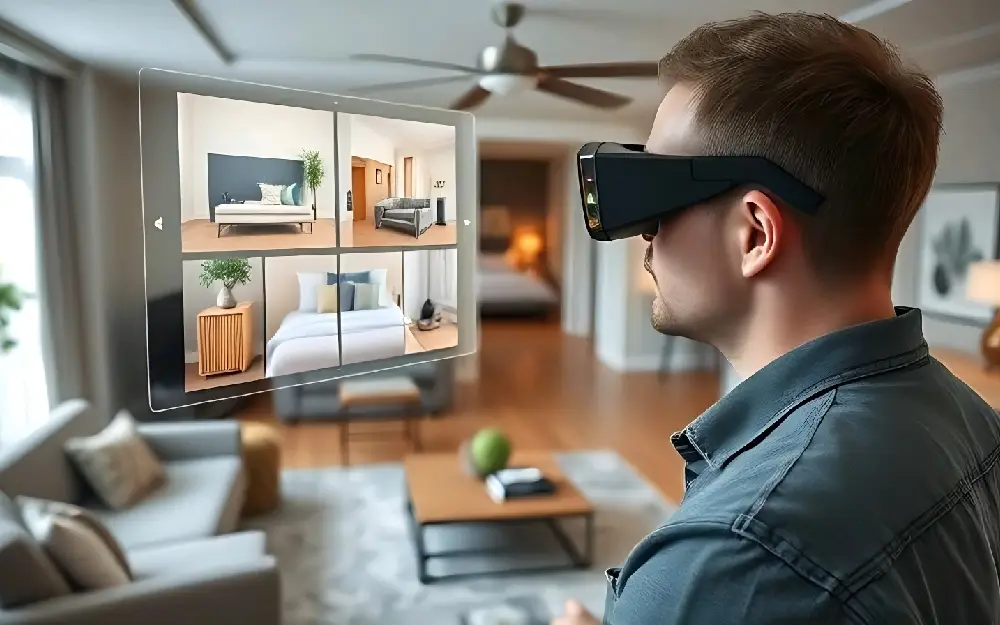
Using Augmented Reality (AR) for Home Design Visualization: A Game-Changer in Interior Design
In recent years, technology has dramatically transformed the way we approach interior design. One of the most exciting innovations to emerge is Augmented Reality (AR)—a cutting-edge tool that is revolutionizing how we visualize and plan our living spaces. Whether you're redesigning a single room or planning a complete home renovation, AR offers an immersive and highly practical way to preview and experiment with design ideas before committing to them. Let's dive into how AR is making home design easier, more intuitive, and more creative.
What is Augmented Reality (AR) in Home Design?
Augmented Reality is a technology that overlays digital elements onto the real world. When applied to home design, AR allows homeowners, designers, and even DIY enthusiasts to visualize furniture, décor, color schemes, and layouts directly in their space through a smartphone, tablet, or AR glasses. Unlike traditional 3D models, which require separate screens or VR headsets, AR enables real-time interaction with digital objects in the context of your actual environment.
Benefits of Using AR for Home Design Visualization
1. Instant Visualization
One of the biggest challenges in home design is imagining how a new piece of furniture or a different layout will look in your space. AR solves this problem by providing instant, realistic visuals. With just a few taps, you can see how a new sofa will fit in your living room or how a new paint color will transform your kitchen walls—without having to move a single piece of furniture. This real-time visualization eliminates guesswork and helps ensure your design choices work well in your actual space.
2. Try Before You Buy
AR allows you to "try before you buy," a concept that has become increasingly popular in the world of e-commerce. Furniture and décor brands, as well as design apps, are now incorporating AR features that enable you to place products in your home virtually. This is especially helpful when buying large or expensive items, such as a new dining table or an oversized artwork. By visualizing the item in your home first, you can ensure it’s the right size, style, and color—avoiding the hassle of returns and exchanges later.
3. Endless Design Possibilities
AR technology opens the door to endless creative possibilities in home design. Instead of being limited to a few design choices or relying on static images in magazines, you can experiment with an array of virtual items and styles. Want to see how different shades of blue look on your bedroom walls? Or test out various floorplans in real-time? With AR, the sky’s the limit. You can easily switch out furniture, change wall colors, or even try new textures to see how everything harmonizes in your space.
4. Space Planning and Layout Adjustments
One of the most practical applications of AR in home design is space planning. Arranging furniture can often be a time-consuming process, and shifting heavy items around can be exhausting. AR helps visualize how different furniture pieces will fit and flow within your space before you move anything physically. This is particularly useful for small or oddly-shaped rooms where you need to maximize space efficiency. By simply moving virtual pieces around, you can plan and tweak your layout to achieve the most functional and aesthetically pleasing result.
5. Improved Decision-Making
With AR, the process of decision-making becomes much easier. Instead of worrying about whether a design choice will look good in person, you get a realistic preview in the environment where the changes will occur. This enhanced confidence in your decisions minimizes the chances of regret or costly mistakes. Additionally, AR allows you to visualize how different styles or trends will work together, helping you create a cohesive and stylish look that reflects your personality and preferences.
How AR is Changing the Interior Design Industry
The use of AR in home design isn’t just a fun novelty—it's a practical tool that is increasingly being adopted by professionals. Interior designers are leveraging AR technology to collaborate with clients, showcasing their design ideas in real-time, and making design iterations more efficient. It has become a game-changer in the industry, reducing the need for physical mockups and helping clients visualize the final look before any work is done.
Moreover, furniture and home décor brands are taking advantage of AR to enhance the shopping experience. Many companies now offer AR apps that allow customers to visualize their products directly in their homes, improving the likelihood of a purchase and reducing returns.
Popular AR Tools for Home Design
- Ikea Place: This app allows you to place virtual Ikea furniture in your home to see how it looks and fits in the space. It’s a great way to experiment with different furniture pieces and find the perfect match for your room.
- Houzz: With its vast catalog of furniture, décor, and design ideas, Houzz's AR feature lets users place items in their homes and adjust them to get a sense of the room's design.
- Roomstyler: This app provides 3D models of furniture that you can place in your room to get a realistic view of how different items will work together.
- Magicplan: Magicplan allows you to create floor plans and visualize how furniture will fit into those plans, all with the help of AR.
Conclusion: The Future of Home Design is Augmented
As AR technology continues to evolve, its role in home design will only expand. By offering instant, interactive, and accurate design previews, AR is making it easier than ever to create spaces that are both functional and stylish. Whether you’re a homeowner looking to update a room or a professional interior designer collaborating with clients, AR offers an intuitive, immersive solution that takes the guesswork out of design.
With tools that help you experiment, plan, and visualize in real-time, augmented reality is truly changing the way we approach home design—making it more accessible, efficient, and exciting than ever before.


